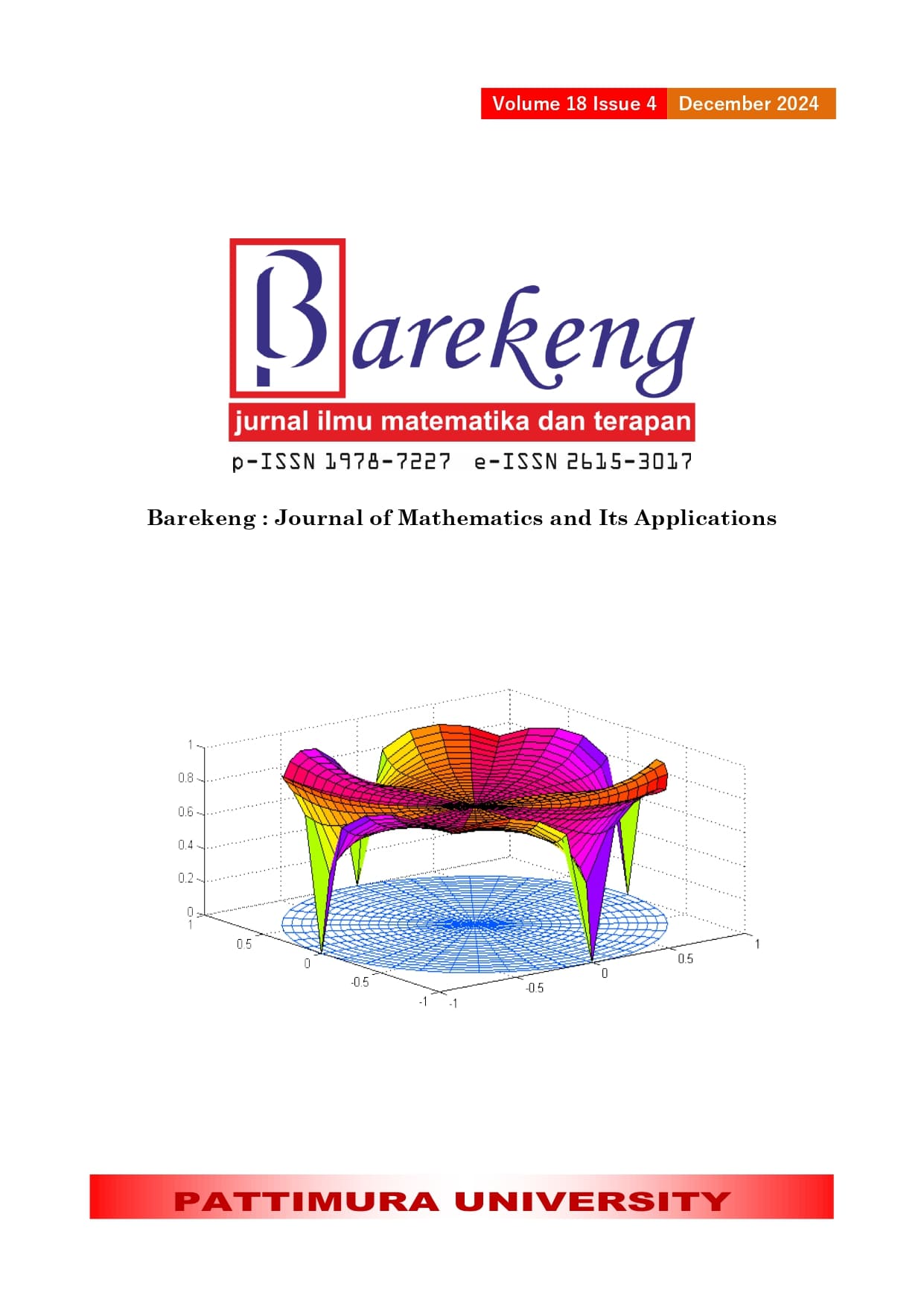ANALYSIS OF ECOTOURISM AND DISASTER MITIGATION DATA AT THE KUALA LANGSA MANGROVE FOREST BY USING THE ANALYTIC HIERARCHY PROCESS
Abstract
The problem in the management of a public area is to determine aspects that contribute most as its best practices. This paper explores the contributions of the Kuala Langsa Mangrove Forest located in Langsa City, Aceh Province, for ecotourism and disaster mitigation. This research was intended to analyze the aspects of forest management that has successfully reformed dry coast into an ecotourism site. The Analytic Hierarchy Process (AHP) as a multicriteria decision making method was used to analyze the best indicators data. This method was selected as the suitable method since it utilizes the objectivity of mathematics in comparing some subjective criteria to obtain the best indicators. The implementation of the AHP method consists of three stages: the development of the criteria’s hierarchy table; the development of pairwise matrix related to the intention of giving weights for the criterion’s elements; the logical concistency verification of the matrix. Indicators were written on a five point scale related to a value judgement. The results of the research show that as an ecotourism site, the activities of the mangrove forest are motivated and based on the existing rules which attract people to become interested. The role of the local government has resulted: developed the programs according to the existing mangrove management law that reached 67% among other law related indicators; budget allocation priority by self-generating which get priority of 59% among budget indicators; oriented on the increasing of fishermen, obtained 49% of economical function elements; encouraged the involvement and partnership of the local resources around the mangrove forest which reached 31% among other programs offered and sustainability approach by considering ecological functions aspect. For physical contribution for disaster mitigation, the largest dissipation is given by Rhizophora mucronata due to its height compared to the other types.
Downloads
References
S. Karim, Umara Pemimpin Pelayan (the Servant Leader) Penggerak Perubahan di Kota Langsa, 1st ed. Jakarta: Indomedia, 2017.
J. M. Hendriks, “Waves dissipation in mangroves,” Master’s [Thesis], Enschede, NL: The University of Twente, 2014. [Online]. Available: https://www.utwente.nl/en/et/cem/research/wem/education/msc-thesis/2014/hendriks.pdf
N. Zurba, H. Effendi, and Yonvitner, “Management of mangrove ecosystem potency in Kuala Langsa, Aceh,” J. Ilmu dan Teknol. Kelaut. Trop., vol. 9, no. 1, pp. 281–300, 2017.
Iswahyudi, K. Cecep, H. Aceng, and B. P. Noorachmat, “Evaluasi kesesuaian lahan untuk rehabilitasi hutan mangrove kota Langsa Aceh,” J. Mat. Sains, dan Teknol., vol. 20, no. 1, pp. 45–56, 2019.
E. Sulistyaningrum, Aplikasi AHP (Analytical Hierarchy Process) untuk Hierarchical Analysis, dalam Metoda Pengumpulan dan Teknik Analisis Data. Yogyakarta: Andi, 2018.
Rahmawaty et al., “Mangrove cover change (2005-2019) in the northern of Medan City, North Sumatra, Indonesia,” Geocarto Int., vol. 38, no. 1, pp. 1–28, 2023, [Online]. Available: https://doi.org/10.1080/10106049.2023.2228742
T. Warnisngsih, Kusai, L. Bathara, Zulkarnain, T. Ramadona, and Deviasari, “Management Strategy of Mangrove Ecosystem in Siak Regency, Riau Province, Indonesia,” ECSOFiM J. Econ. Soc. Fish. Mar., vol. 09, no. 01, pp. 60–71, 2021, doi: http://doi.org/10.21776/ub.ecsofim.2021.009.01,05.
S. Arif, “Mathematical model for mangrove protections toward nearshore process,” in The 11th Aceh International Workshop and Expo on Sustainable Tsunami Disaster Recovery, 2019, pp. 1–6. doi: 10.1088/1755-1315/273/1/012023.
A. Chandra, “Deep dive into Analytical Hierarchy Process using Python,” Towar. Data Sci., 2020.
Zubir, “Mangrove Forest Park di Langsa Masuk Nominasi API 2019,” 2019. [Online]. Available: https://aceh.tribunnews.com/
L. K. Langsa, “Informasi Paket,” 2019. [Online]. Available: http://lpse.langsakota.go.id/
A. A. Arif, “Perencanaan hutan mangrove Kuala Langsa,” Beudoh Gampong, vol. 2, no. 3, p. 3, 2019.
Analisa, “Wisata mangrove Langsa mampu tingkatkan PAD,” 2015. [Online]. Available: https://analisadaily.com/berita/arsip/2015/4/28/128953/wisata-mangrove-langsa-mampu-tingkatkan-pad/
R. Zhang, Y. Chen, J. Lei, X. Zhou, P. Yao, and M. J. F. Stive, “Experimental investigation of wave attenuation by mangrove forests with submerged canopies,” Coast. Eng., vol. 186, no. December, 2023, doi: 104403.
F. D. Cahyadi, N. Khakhim, and D. Mardiatno, “Integrasi SWOT dan AHP dalam pengelolaan ekosistem mangrove di kawasan wisata bahari gugusan pulau Pari,” J. Pariwisata Pesona, vol. 3, no. 2, pp. 105–118, 2018, doi: 10.26905/jpp.v3i2.2336.
Copyright (c) 2024 Salmawaty Arif, Nanda Akmalia

This work is licensed under a Creative Commons Attribution-ShareAlike 4.0 International License.
Authors who publish with this Journal agree to the following terms:
- Author retain copyright and grant the journal right of first publication with the work simultaneously licensed under a creative commons attribution license that allow others to share the work within an acknowledgement of the work’s authorship and initial publication of this journal.
- Authors are able to enter into separate, additional contractual arrangement for the non-exclusive distribution of the journal’s published version of the work (e.g. acknowledgement of its initial publication in this journal).
- Authors are permitted and encouraged to post their work online (e.g. in institutional repositories or on their websites) prior to and during the submission process, as it can lead to productive exchanges, as well as earlier and greater citation of published works.






1.gif)



